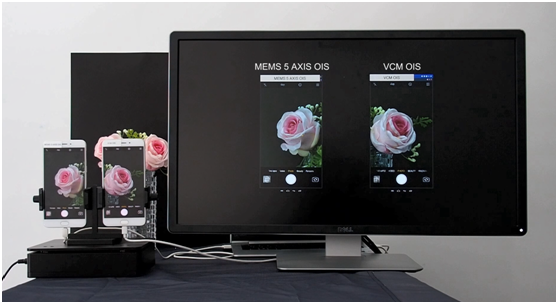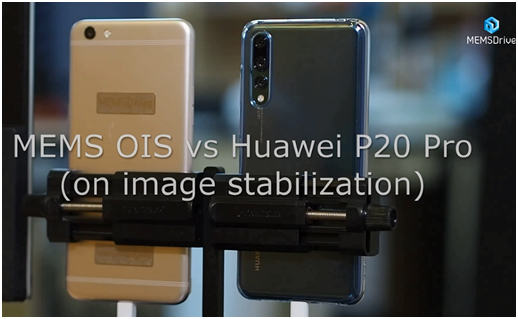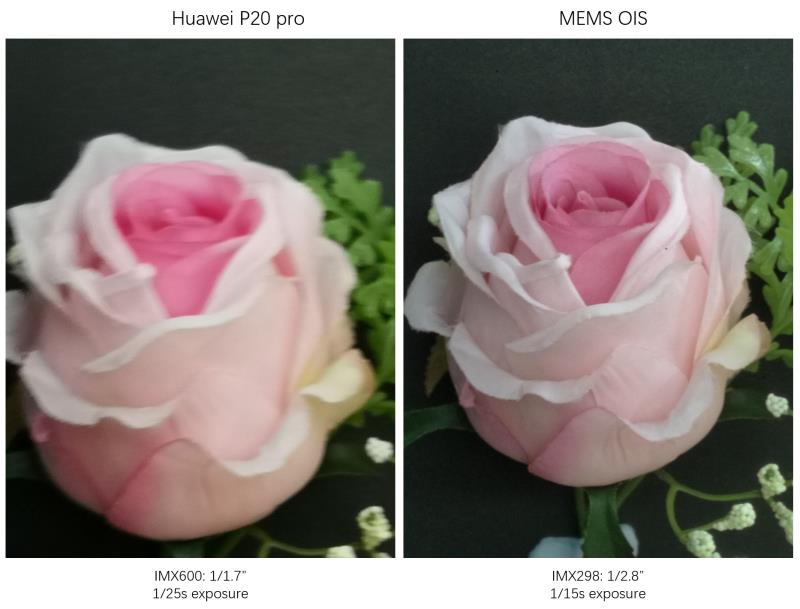OIS, EIS, AIS…What Is the Best “Image Stabilization”?
As Samsung Note 8 and iPhone X have realized dual OIS one after another in second half of 2017, Huawei, with its recently released flagship P20 Pro, announces new image stabilization approach as which they call it Artificial Image Stabilization (AIS).
Nowadays, there’re mainly two ways of image stabilization methods on the market: 1. Optical Image Stabilization (shortly known as OIS, mainly realized through VCM—voice coil motor, represented phones are Samsung Note 8 and iPhone X and other mainstream brands); 2. Electronic Image Stabilization (shortly known as EIS, realized by computer algorithm, represented by Google Pixel series). For AIS (Artificial Image Stabilization) which is raised out by Huawei, though we’re not able to find out more detailed information, we’ll try to discuss about its performance through a comparison test at the end of this article.
In recent years, VCM OIS has been widely adopted by most of the cellphone brands in their high end phones, greatly upgrading mobile phone photography. However, issues such as lack of roll compensation and magnetic interference have boasted great challenges for all phone makers. Even giants like Samsung and Apple have found out ways to tackle the magnetic interference and realize dual camera OIS, there’s still a lot to improve on the image stabilization performance.
MEMS OIS, an OIS actuator based on MEMS technology, has surpassed all mobile image stabilization solutions on the market and wins wide attention in the industry. Being an optical image stabilization technology also, however, it addresses hand shaking of cellphones from a different way—moving the image sensor instead of moving lenses which is adopted by traditional VCM OIS solution. And this gives MEMS OIS the great advantage of compensating roll axis shake which cannot be realized by VCM OIS. Compensating all axis of shake becomes possible in your mobile devices just like experience you can get from professional photography equipment.
MEMS OIS-- World’s 1st 5-Axis Image Stabilization vs VCM OIS
A few months ago, MEMSDrive successfully upgraded the 3-axis MEMS OIS to 5-axis, adding x and y translation compensation to the already existing pitch, yaw, and roll. This makes MEMS OIS world’s first 5-axis image stabilization in smartphones compared to DSLR-level. Even it is under close shots when shaking affects the image quality a lot, with the compensation of x and y translation, the image stability could be guaranteed. Below is a demo comparison of MEMS OIS vs VCM OIS under close shots:

MEMS 5-Axis OIS vs VCM OIS
As a result of the differences in “lens moving vs sensor moving”, “4-axis vs 5-axis”, “with roll vs without roll”, MEMS OIS shows superior image stabilization advantage over VCM OIS all the time.
If you’re interested in more comparison of MEMS OIS vs VCM OIS, you may click here to read the article on comparison of MEMS OIS with iPhone X and Samsung Note8.
AIS—Let’s See Performance of the New Concept
In April, Huawei launched P20 Pro and wins great attention with its supreme photography quality, supported by 3 Leica cameras and AIS. While we applause for great achievements of our partners, we also would like to have a demo test on the performance and discuss possible future advances of image stabilization here.
Firstly, let’s take a look at images of MEMS OIS phone and Huawei P20 Pro in the preview mode:


Image Comparison in Preview Mode
As is shown in the demo video above, we put two phones on the same shaker and turn the shaker on:
1. Under 1x zoom, Huawei P20 Pro image is shaking strongly (AIS working, OIS not enabled as only its telephoto camera has OIS), while MEMS OIS phone image is stable
2. Under 3x and 5x zoom, Huawei P20 Pro image is shaking (AIS and telephoto OIS both working), MEMS OIS phone image also keeps stable
| 1x zoom | 3x zoom | 5x zoom | |
| Huawei P20 Pro |
AIS (OIS not enabled);
image shaking
|
AIS, OIS
image shaking
|
AIS, OIS
image shaking
|
| MEMS OIS |
MEMS OIS pitch, yaw, roll,X,Y 5-axis compensation;
image stable
|
MEMS OIS pitch, yaw, roll,X,Y 5-axis compensation;
image stable
|
MEMS OIS pitch, yaw, roll,X,Y 5-axis compensation;
image stable
|
We also have a few photo captures under low light. Testing is carried out indoor in a cloudy day with lights turned off. We put the two phones on the same shaker and give 4HZ/0.6deg shaking to them respectively (an imitation of moderate handshaking).
Image comparison of 1s exposure
Environment: <10 lux

Auto mode with close shot:
Environment: 30 lux


A fact is, Huawei P20 Pro with its image sensor of 1/1.7” and a shorter exposure time, which actually is more favorable taking pictures in low light and shaking environment, its image quality seems not as sharp and clear as that of MEMS OIS, which is with a smaller image sensor and longer exposure time.
All progress takes pains taking efforts behind. As we salute to all great industry players, we also hope to push forward innovation and changes of the industry together with our clients and partners.
